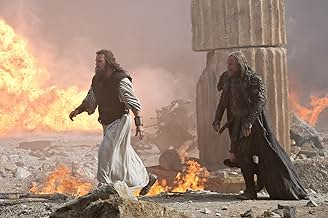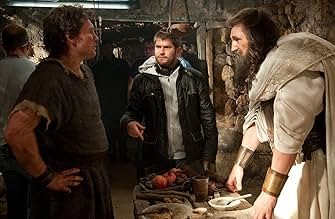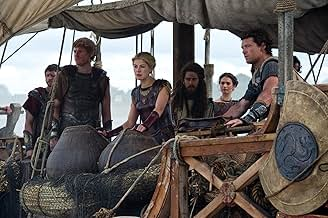Ten years have passed since Perseus defeated the Kraken. Now, he’s a single father raising his son from Io somewhere in the backwoods of Ancient Greece. Meanwhile, the gods, weakened by the lack of human prayers, are on the verge of losing their remaining power. Hades forms a coalition with Ares, the god of war: together, they kill Poseidon, kidnap Zeus, and drag him to Tartarus, where the titan Cronus (father to Zeus, Poseidon, and Hades, imprisoned by them in the depths of the earth) languishes. Hades’ plan is to transfer Zeus’ remaining power to Cronus, thus helping him break free from his stone prison. In return, Hades expects to regain his immortality. Meanwhile, the human world is already falling apart, and Queen Andromeda’s army (now played by Rosamund Pike) is barely holding off the evil spirits pouring out of the cracks. Unable to stand aside any longer, Perseus kisses his son and mounts his faithful Pegasus.

More than anything, the second “Titans…” resembles a family quarrel that has dragged on and is taking place on an erupting volcano. Grievances are poured out, lava flows, accusations are hurled, and chunks of rock fly. And the notorious divine power is nothing more than an excuse to sort out once again who betrayed whom and for how many pieces of silver. During the fight between Ares and Perseus, the former even reproaches the latter: this is for your father loving you more.

The original source material (if we consider the entire body of ancient Greek myths as such) is almost half composed of stories about the various forms Zeus took to cheat on his Hera. However, everything is described in a more inventive and, most importantly, more linear way: one myth – one crippled fate. Meanwhile, viewers of “Wrath of the Titans” who haven’t seen the first part, “Clash of the Titans,” may well feel like they’re watching not the second part, but the fifth or even sixth. Moreover, this feeling remains even for viewers who have seen both parts.

Production and Direction
However, director Jonathan Liebesman, who replaced Louis Leterrier, has his own family and children to feed, as well as a runtime, budget, and a whole “Disneyland” of fiery 3D attractions to cram into one standard action film. That’s why everything has to be done on the run, on the gallop, and on an erupting, again, volcano.

Visual Experience
But the director of yesterday’s “Battle for Los Angeles” has coped with the studio’s task quite well: there is no point in watching the film anywhere other than in cinemas. And although there is no complete certainty that the studio’s terms of reference were formulated precisely in these terms, the reality is that with every inch taken away from the screen diagonal, the chances of distinguishing Perseus from the Cyclops’ leg decrease in geometric proportion. In other words, the spectacle unfolding in the film needs a corresponding “arena.”
3D Improvements
In addition, the producers of the film listened and corrected the inauthentic 3D in the first series, and now the ash is flying, flying on the head. It’s hard not to succumb to the corresponding mood.